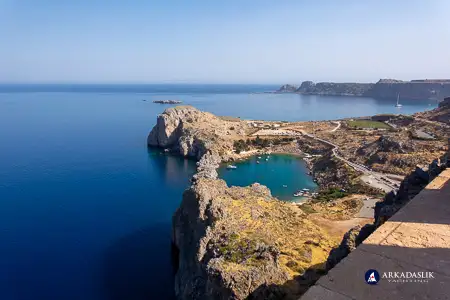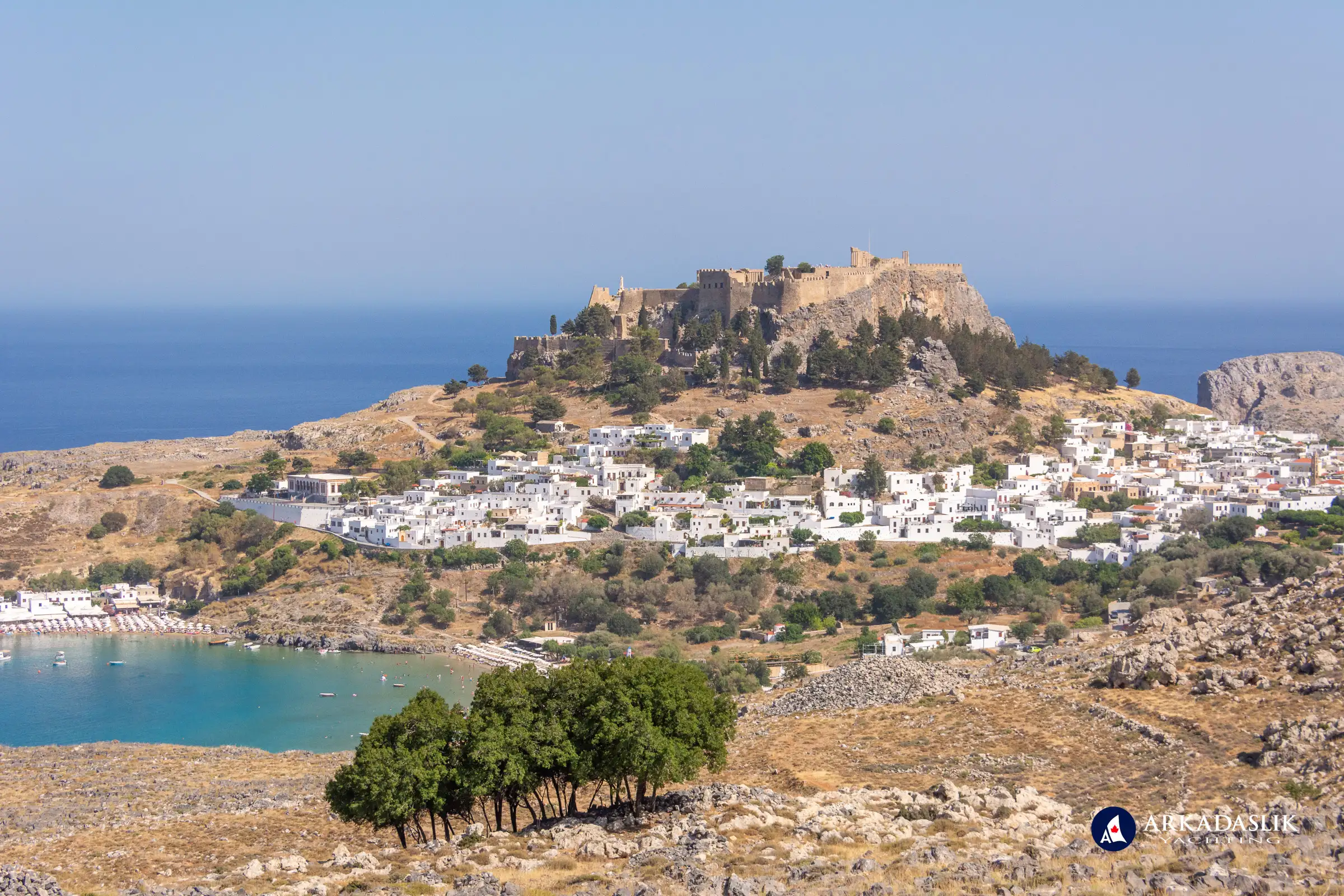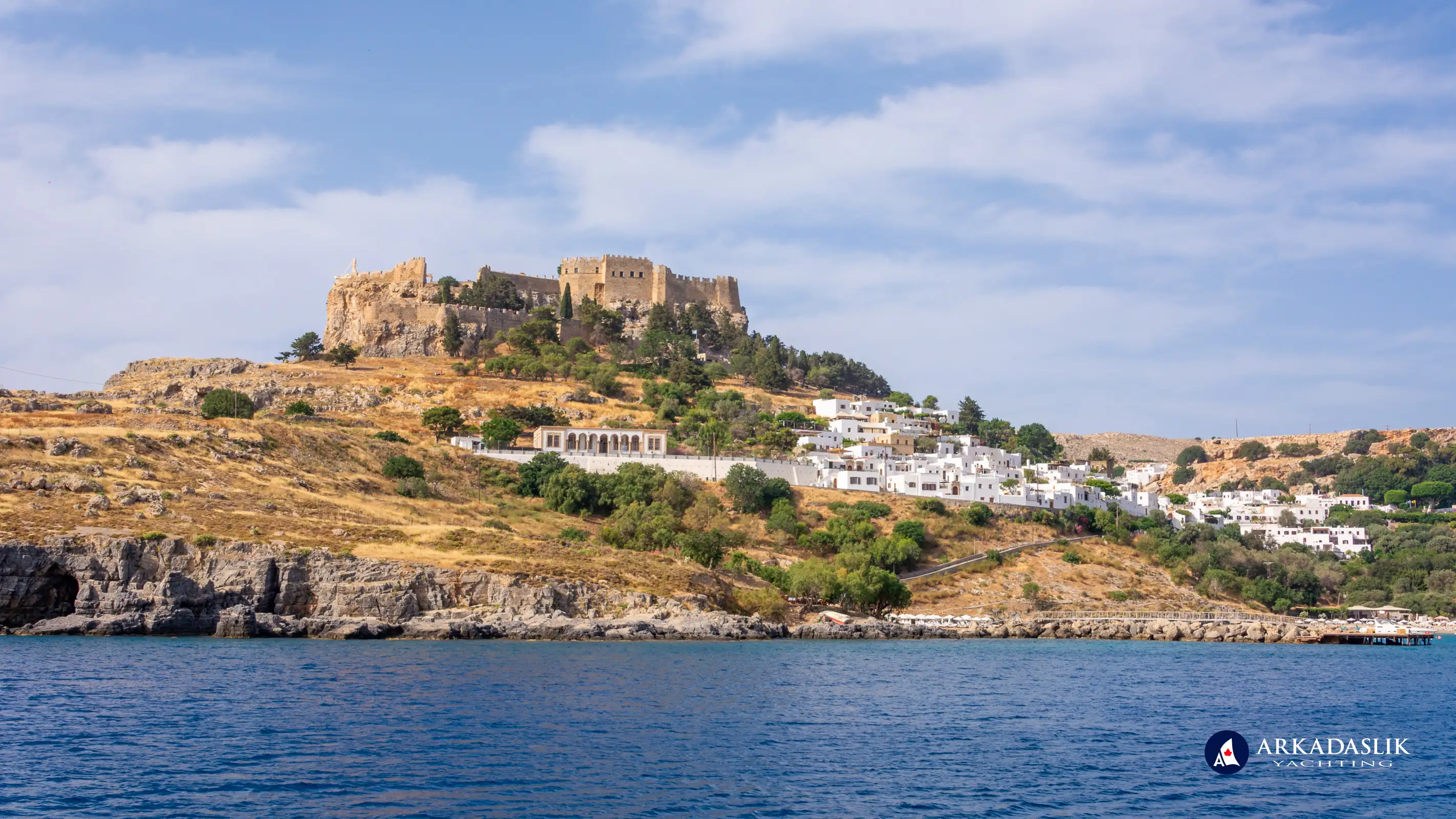Lindos, located on the east coast of Rhodes, is a quintessential Greek village famed for its whitewashed architecture, historic ruins, and panoramic views. This charming settlement, founded around the 10th century BC, began as a humble fishing village but quickly became an important trading and naval hub due to its strategic location near the island’s only natural harbors.
Over the centuries, Lindos served as a defensive stronghold, evidenced by its natural rock citadel. A mix of Greek, Roman, Byzantine, and Ottoman archaeological sites showcases the town's diverse and tumultuous history.
At its zenith in the 6th century BC, Lindos flourished as a center of commerce and military power. However, its influence declined after the fortified city of Rhodes was built 50 km to the north, shifting political and economic focus.
Top Attractions in Lindos
1. The Acropolis of Lindos
Perched atop a steep cliff, the Acropolis is an iconic landmark that offers breathtaking views of the Aegean Sea. Key highlights include:
- Hellenistic Stairway (2nd century BC) leading to the Knights’ Castle
- Temple of Athena Lindia (300 BC)
- Propylaea of the Sanctuary (4th century BC)
- Greek Orthodox Church of St. John (14th century)
- Carving of a Rhodian Warship (180 BC)
2. St. Paul’s Bay
This picturesque bay is not only stunning but also historically significant as the landing site of St. Paul in 57 AD.
3. Virgin Mary of Lindos Church
A masterpiece of medieval architecture, this 15th century church features an intricately designed bell tower and a domed roof.
4. The Tomb of Kleobulus
Situated at the bay's edge, this small stone structure is a tribute to Lindos’ ancient ruler, though not his final resting place.
5. Ancient Theatre and Cemetery
Carved into local rock, these remnants reflect the cultural and civic life of ancient Lindos.
6. Lindos Beach
Framed by the natural harbor, Lindos Beach offers a relaxing escape for sunbathers and watersport enthusiasts alike.
Fun Facts About Lindos
- Pirate-Proof Design: The winding streets of Lindos were intentionally designed to confuse invaders, a tactic that continues to bewilder modern-day visitors!
- Historic Homes: Most houses in Lindos date back to the 16th-18th centuries, with strict preservation laws ensuring their timeless charm.
- Tourist Magnet: Despite its small population, Lindos attracts over half a million visitors annually.
- Maritime Legacy: The Rhodian Naval Code, established here, forms the foundation of modern maritime law.
- Unique Transportation: Within Lindos’ labyrinthine streets, transportation is limited to foot, donkey, or moped.
- Pebble Mosaics of Lindos: The intricate pebble mosaics, locally known as votsaloto (meaning "pebbly"), originated in Lindos during the Hellenistic period. Crafted with black, blue, and white stones arranged in zigzag or geometric patterns, this art form gained widespread popularity during the Byzantine era. Today, these striking mosaics can be admired across the Dodecanese islands, adding a touch of traditional elegance to courtyards and walkways.
Enchanting Views of Lindos: A Visual Journey
Experience the timeless allure of Lindos through our curated photo gallery. From the imposing Acropolis to its charming whitewashed streets and scenic bays, every corner of Lindos tells a story. Wander the labyrinthine alleys, marvel at ancient ruins, and soak in the breathtaking beauty of Rhodes’ most iconic village.
Click on any image to expand.

















White houses and buildings form a confusing labyrinth, but there's no better way to pass the time than trying to find your way around the charming Greek village of Lindos with its imposing acropolis.
Time and weather permitting, Lindos can be visited on our Greek Island cruises to Rhodes.

















